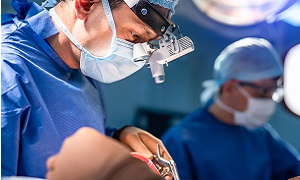Best Ankle Replacement Doctors in India
Best Ankle Replacement Hospitals in India
- City: Bengaluru, India
Hospital Highlights:
- Fortis Hospital Bannerghatta, Bengaluru was established in 2006.
- The hospital is a 276 bedded multi-specialty tertiary care facility.
- The hospital specializes in cutting-edge medical technology and dedicated patient care services.
- The hospital is equipped with state-of-the-art technologies like trans-radial angioplasty, trans-abdominal cardiac surgery, and computerized TKR navigation surgery.
- The hospital provides specialty medical services in cardiology, cardiac surgery, orthopedics, neurology, neuro-surgery, GI, and Minimal Access Surgery (MAS).
- City: Chennai, India
Hospital Highlights:
- Fortis Malar was established in 1992 and was formerly known as Malar Hospital.
- The hospital specializes in cutting-edge medical technology and dedicated patient care services.
- The hospital is multi-specialty, tertiary care facility with 180 beds.
- The hospital offers comprehensive medical care in specialties such as cardiology, cardio-thoracic surgery, neurology, neurosurgery, orthopedics, nephrology, gynecology, gastroenterology, urology, pediatrics, and diabetes.
- City: New Delhi, India
Hospital Highlights:
- Established in 1996, Pushpawati Singhania Research Institute is one of the top hospitals in the NCR region, as well as one of the top facilities in India for gastroenterology. The hospital is one of South Asia’s first institutes in medical and surgical treatment for diseases related to digestion.
- The hospital is equipped with state-of-the art facilities coupled with the latest equipment as well as renowned consultants from various parts of India as well as other parts of the world.
- City: New Delhi, India
Hospital Highlights:
- State-of-the-art technology and devoted healthcare professionals have been brought together under one roof at Venkateshwar Hospital to provide genuine medical care. The hospital’s professionals work together as a team to deliver the best possible treatment to their patients, using the most sophisticated equipment and information technology.
- Venkateshwar Hospital’s mission is to attain global excellence in healthcare by employing evidence-based, ethical clinical practices and cutting-edge technology by a team of highly skilled experts.
- City: New Delhi, India
Hospital Highlights:
- Sir Ganga Ram Hospital, New Delhi is known to provide the latest medical procedures with the latest technology in all of its units.
- The hospital has a team of reputed doctors, nurses, and healthcare professionals that ensure that patients receive quality care at affordable costs.
- Staffed with a team of highly qualified doctors, dedicated nurses, and paramedical and non-medical staff, the hospital aims to lead in healthcare delivery, medical education, training, and research.
- As per the vision of the founder, the hospital also provides free treatment to the economically weaker sections of society.
- Sir Ganga Ram Hospital also provides training to young doctors under the Diplomate in National Board(DNB) program. The DNB program at the hospital was started in 1984 and it is known for currently running the maximum number of DNB specialties in the country. It also has the distinction of having the first bone bank in India.
- City: Kerala, India
Hospital Highlights:
- Established in 2019, Apollo Adlux Hospital is the first Apollo Hospital in Kerala and the 73rd hospital owned by Apollo Group in India. With the state’s most advanced, comprehensive healthcare infrastructure and cutting-edge technologies, Apollo Adlux Hospital stands as an example of medical excellence in Kerala.
- With over 34 multi-specialty departments, the hospital believes in providing the best quality treatment to its patients at affordable rates, ensuring comfort at their difficult times.
- The 300-bed hospital is managed by a team of highly qualified and experienced experts who delivers exceptional hospitality to their patients and treats them with great compassion.
- With its affiliation with the Apollo Hospitals Group, the hospital aims in providing patients with top-notch healthcare services while also serving communities in Kerala.
- The hospital has good railway and road connections, and is conveniently close to Cochin International Airport.
- City: Gurugram, India
Hospital Highlights:
- Situated near DLF Cyber City, Gurugram, Narayana Superspecialty Hospital is one of the top medical facilities in the Delhi NCR region, catering to the needs of the people. Known for its commitment to quality medical care and patient service, the hospital is a state-of-the-art facility with planned and well-equipped sections, which includes a spacious OPD area as well as comfortable patient rooms.
- It is the closest super-specialty hospital from Indira Gandhi International Airport towards Gurugram, and also the nearest super specialty hospital from DLF Cyber City. It is also close to major residential areas in Gurugram.
- It is part of the renowned Narayana Health Group. Established in 2000, by Dr. Devi Shetty, a renowned cardiac surgeon, it has grown to be one fo India’s leading healthcare groups.
- City: Noida, India
Hospital Highlights:
- Fortis Hospital, Noida, stands as one of the oldest and most trusted healthcare institutions in the region, setting a benchmark for comprehensive medical care.
- As the second mega hub hospital in the Fortis Healthcare Group, Fortis Hospital, Noida, upholds a legacy of trust among more than 1.2 million patients. By integrating top-tier professionals with cutting-edge technology, the hospital delivers superior treatment across various medical disciplines.
- Specializing in advanced Neurosciences, Orthopedics, Kidney and Liver Transplant Programmes, Fortis Hospital, Noida has successfully performed over 1,500 transplants, solidifying its reputation as a leader in specialized medical interventions.
ANKLE REPLACEMENT
Purpose
Ankle replacement surgery is meant for those patients who suffer from severe arthritis in their ankle which can lead to symptoms such as severe pain, swelling, stiffness in joints that can lead to difficulty in walking or climbing stairs, stiffness in joints after sitting for too long, pain in joints during and after exercise.
If you are facing any of those symptoms, you should consult a doctor so that he/she can help you decide whether you require surgery or not. In addition to this, the doctor might also recommend any alternative or a less invasive treatment, if it is possible.
If you have the following conditions, this procedure might not be suitable for you:
- If you are having an active or prior deep infection in your ankle joint
- Patients who are having loss of sensation in the foot and ankle
- Severe ankle deformity
- Inadequate bone for supporting the implants
- Neuromuscular disease that can impair muscles which can result in poor muscle tone and function in your ankle.
- Ankle fusion done before
Preparation
First, you should discuss with your doctor regarding what you should do in order to prepare for the procedure. Ask whether you need to stop taking any medications such as blood thinners. If you smoke, it might be important to stop it before the procedure. Inform your healthcare team about the medicines you take. If there are any changes in your overall health, let your healthcare provider know about this.
Some additional tests such as X-ray, MRI or CT scan might be required before the procedure. You might also need to rearrange your living arrangements, as you will need to use crutches for some weeks. Also, you will need to arrange for someone to drive you home from the hospital after the surgery.
Your doctor will most likely ask you to avoid any food and drink after midnight on the night before the surgery.
Surgery
Ankle replacement surgery is generally performed by an orthopedic surgeon. He/she will be aided by a team of specialized healthcare professionals. The whole procedure generally takes a few hours.
You will be put to sleep by your doctor with the help of general anesthesia so that you will not be feeling any pain or discomfort during the procedure. The healthcare team will be monitoring your vital signs carefully, such as your blood pressure and heart rate.
After the affected area is cleaned, your surgeon will create an incision through the skin and muscle of the ankle and possibly another one on your foot as well.
Next, your surgeon will be removing the damaged portions of your shinbone and talus. After this, the new metal joint surfaces will be attached into the pieces of your remaining bones. To hold them in place, your surgeon might use a special type of cement. He/she might also need to insert a plastic between the new metal joint spaces, so they are able to glide easily against each other.
If any repairs are necessary, your healthcare provider might make them. Then the layers of skin and muscle around your ankle and foot will be closed by the surgeon.
Recovery
The stitches can be removed around 2 weeks after your surgery. In the days following surgery, it’s quite important to keep your foot elevated, as this can reduce any swelling.
For around 4-6 weeks from the date of your surgery, patients should not put much weight on the ankles. After around 12 months, you should be able to return to activities such as walking, hiking, swimming, etc. It is important to avoid high-impact activities as much as possible, such as running or heavy sports. These can decrease the life expectancy of the prosthesis in the ankle.
Risks
Though the surgery is a success in most cases, sometimes there might be few risks such as:
- Infection
- Bleeding
- Blood clot
- Damage to nearby nerves
- The bones not properly joining together
- Bones getting misaligned
- New arthritis in the neighboring joints
- Loosening of the artificial components, which can eventually require a follow-up surgery
- Wearing out of the components
The risk of complications can depend on your age and medical conditions. For example, if you are a smoker or if you are suffering from low bone density, you might have an increased risk of some complications.
People with poorly controlled or uncontrolled diabetes might also have an increased risk. Before you undergo the procedure, it is best to discuss all risks and have all your concerns addressed.











